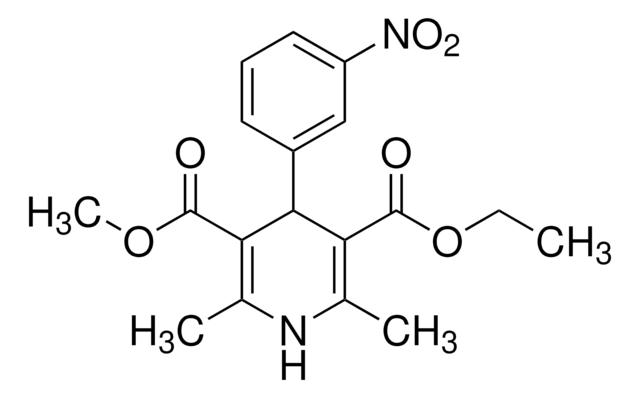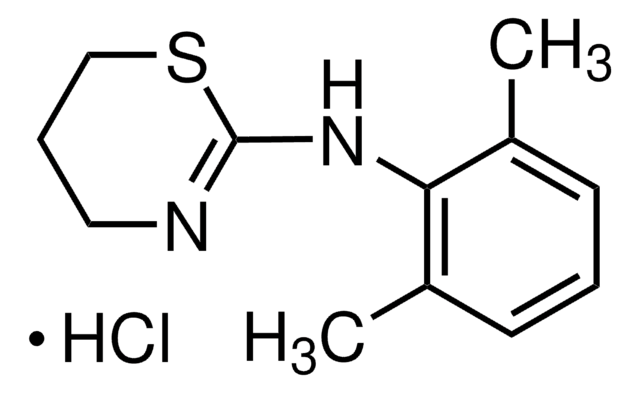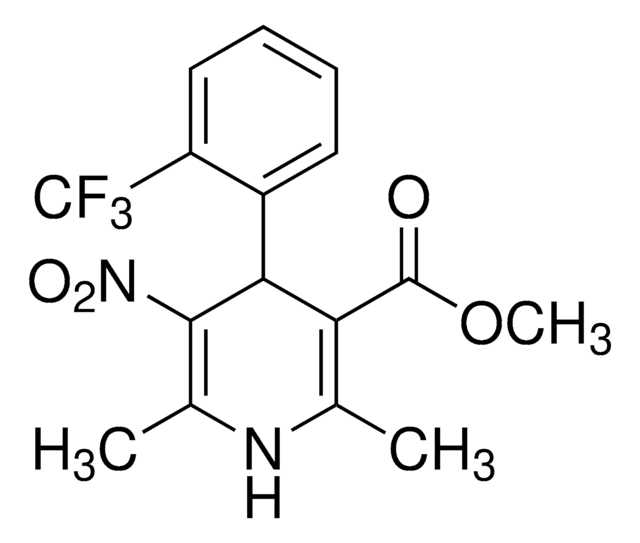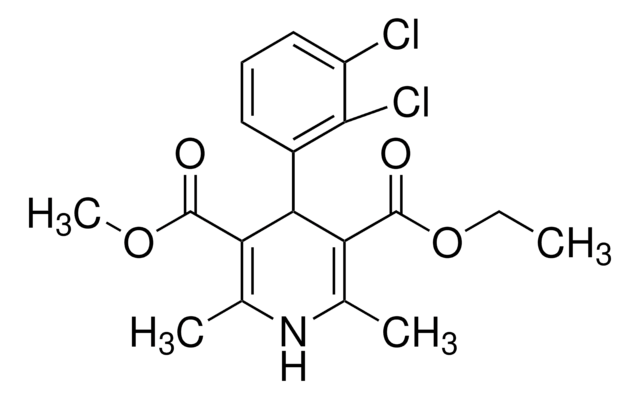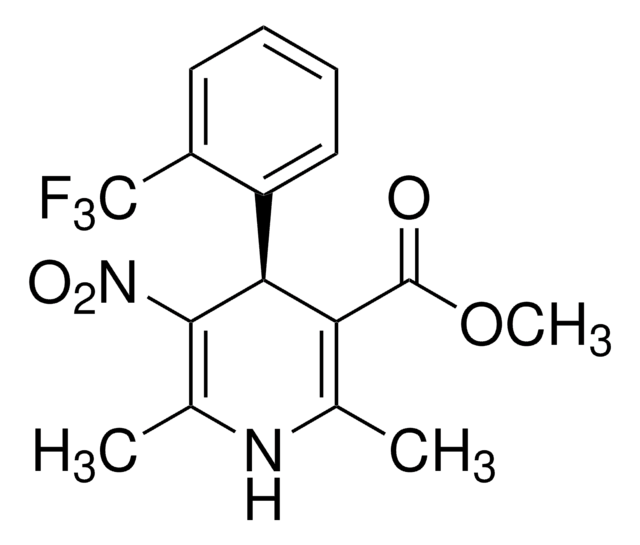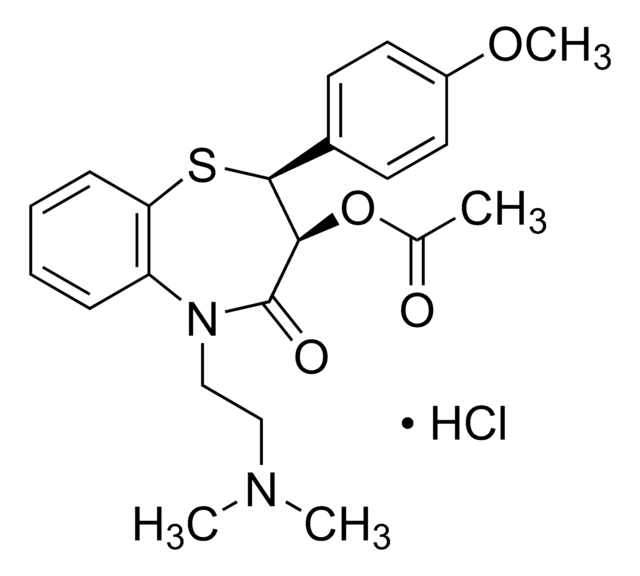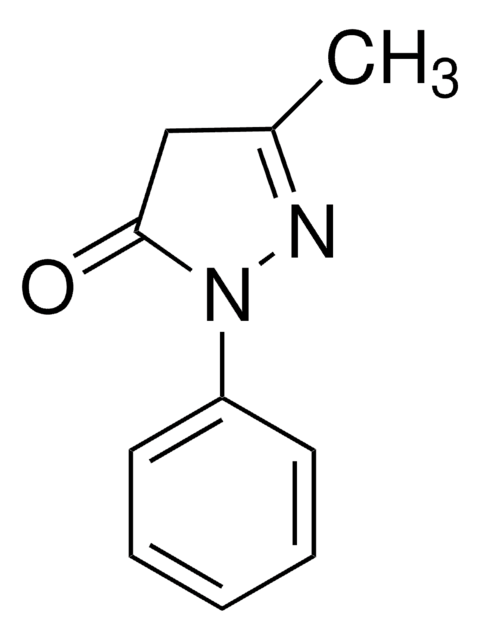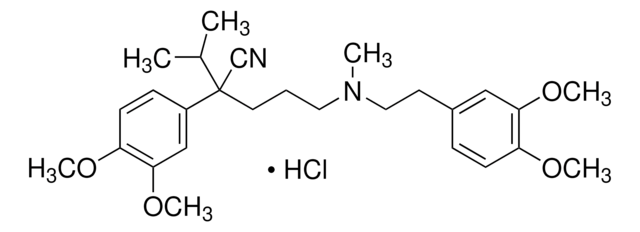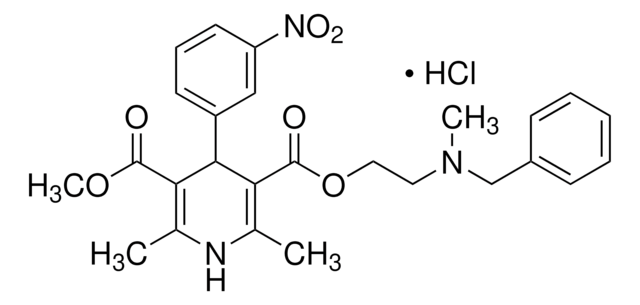N149
Nimodipine
Sinonimo/i:
1,4-Dihydro-2,6-dimethyl-4-(3-nitrophenyl)-3,5-pyridinedicarboxylic acid 2-methoxyethyl 1-methylethyl ester, Isopropyl 2-methoxyethyl 1,4-dihydro-2,6-dimethyl-4-(m-nitrophenyl)-3,5-pyridinedicarboxylate
About This Item
Prodotti consigliati
Saggio
≥98% (HPLC)
Stato
powder
Colore
off-white to yellow
Solubilità
methanol: 62.5 mg/mL
45% (w/v) aq 2-hydroxypropyl-β-cyclodextrin: insoluble
H2O: insoluble
Ideatore
Bayer
Stringa SMILE
COCCOC(=O)C1=C(C)NC(C)=C(C1c2cccc(c2)[N+]([O-])=O)C(=O)OC(C)C
InChI
1S/C21H26N2O7/c1-12(2)30-21(25)18-14(4)22-13(3)17(20(24)29-10-9-28-5)19(18)15-7-6-8-16(11-15)23(26)27/h6-8,11-12,19,22H,9-10H2,1-5H3
UIAGMCDKSXEBJQ-UHFFFAOYSA-N
Informazioni sul gene
human ... ADORA3(140) , CACNA1C(775) , CACNA1D(776) , CACNA1F(778) , CACNA1S(779) , CACNG1(786) , NR3C2(4306)
rat ... Adora1(29290) , Adora2a(25369)
Cerchi prodotti simili? Visita Guida al confronto tra prodotti
Applicazioni
- as a L-type calcium channel (LTCC) inhibitor, to evaluate its neuroprotective activity in the vibrosections
- as a standard, in the enantioseparation of chiral drugs by high performance liquid chromatography (HPLC)
- in the pharmacological studies for the measurement of spine voltage escape
Azioni biochim/fisiol
Caratteristiche e vantaggi
Avvertenza
Avvertenze
Warning
Indicazioni di pericolo
Consigli di prudenza
Classi di pericolo
Acute Tox. 4 Oral
Codice della classe di stoccaggio
11 - Combustible Solids
Classe di pericolosità dell'acqua (WGK)
WGK 1
Punto d’infiammabilità (°F)
Not applicable
Punto d’infiammabilità (°C)
Not applicable
Dispositivi di protezione individuale
dust mask type N95 (US), Eyeshields, Gloves
Scegli una delle versioni più recenti:
Possiedi già questo prodotto?
I documenti relativi ai prodotti acquistati recentemente sono disponibili nell’Archivio dei documenti.
I clienti hanno visto anche
Il team dei nostri ricercatori vanta grande esperienza in tutte le aree della ricerca quali Life Science, scienza dei materiali, sintesi chimica, cromatografia, discipline analitiche, ecc..
Contatta l'Assistenza Tecnica.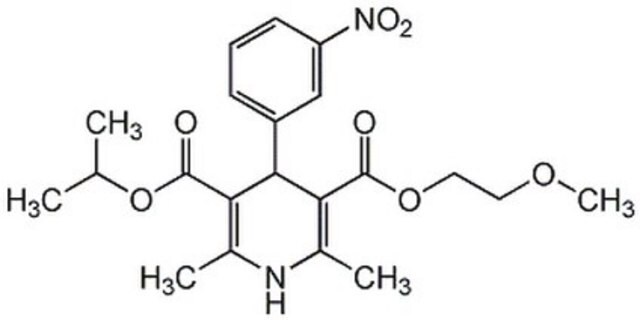
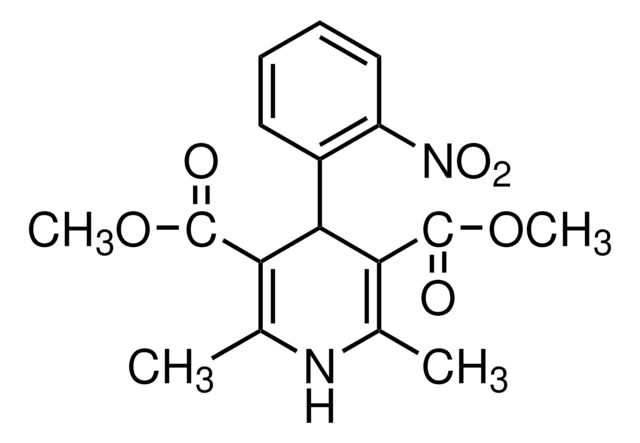
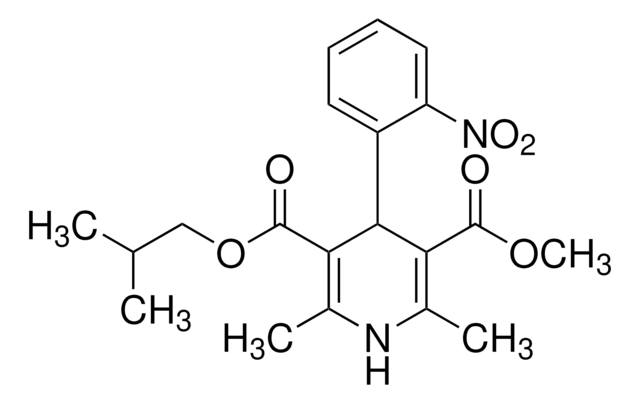
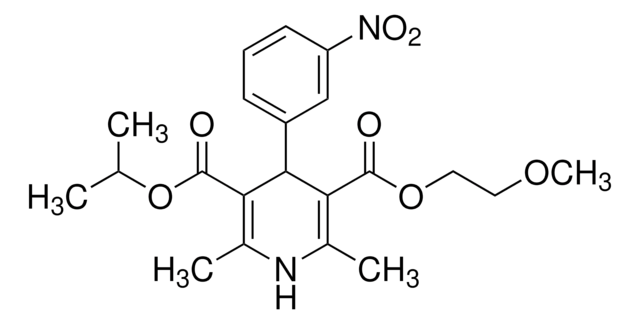
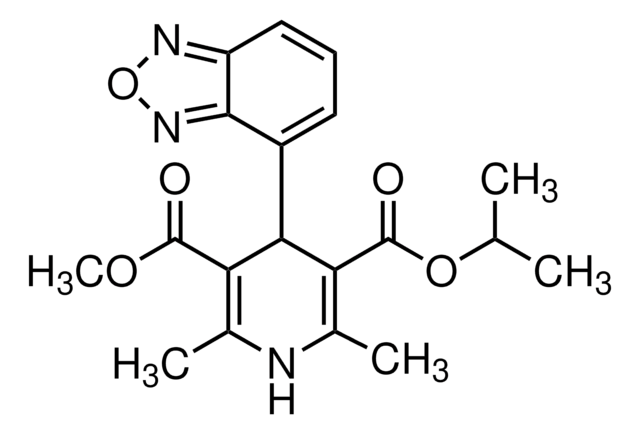

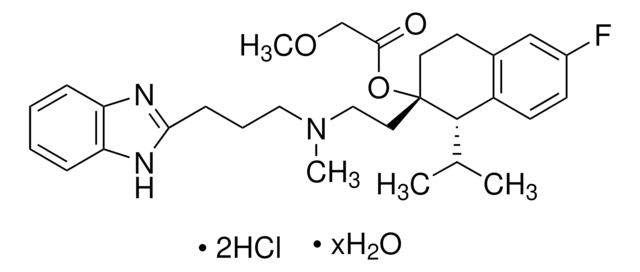
![N(1)-dodecyl-N(3)-[3-(dodecylamino)propyl]-1,3-propanediamine AldrichCPR](/deepweb/assets/sigmaaldrich/product/structures/184/200/68c42cb5-3811-47e2-9f1f-8987743b0fce/640/68c42cb5-3811-47e2-9f1f-8987743b0fce.png)
